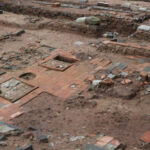Detecting many new architectural vestiges
In 2019, Thang Long – Hanoi Heritage Conservation Center coordinated with the Institute of Archeology to excavate an area of 990 m2 in the northeastern area of the Kinh Thien Palace. This is the ninth time this heritage has been unearthed, taking one step further in revealing the secret curtain of Kinh Thien Palace. From there, it is possible to explore the face of this over 1,000-year-old world heritage.
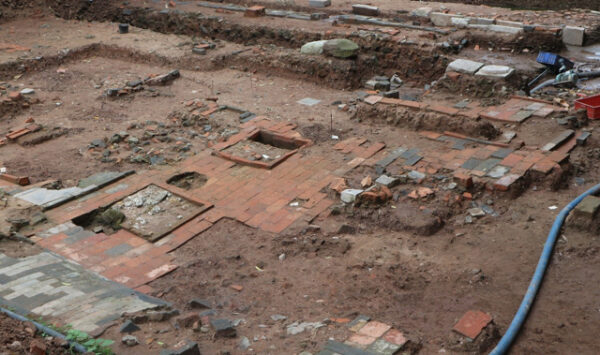
Overall layout of garden architecture in Le Trung Hung period.
The most prominent and dense discovered traces in this excavation belong to the Le Trung Hung period. The very characteristic large pillar foundations of this dynasty revealed are predicted to be the vestiges of a 5-compartment 2-leaned gate leading to the Palace behind the Kinh Thien Palace and a rather orderly garden system. At the end of the Le Trung Hung period, the garden was abandoned to make way for the pond/ lake system which was elaborately built with two brick walls, winding lines, quite sophisticated.
Besides, for the first time after years of excavation at the center of the Imperial Citadel, archaeologists found a rather elaborate brick drain running in the North-South direction from the Dai La era in the 8th century to the 9th century which illustrates that the central area of Dai La citadel is still in the center of Imperial Citadel of Thang Long. This judgment is especially important, helping us to understand the scale of Dai La citadel as well as to understand the scale of Thang Long citadel in the Ly dynasty.
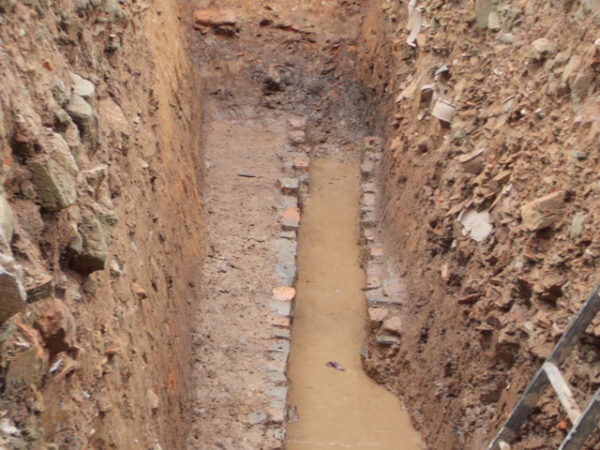
Traces of the sewer in Dai La era.
The architectures of the Dinh – Early Le, Ly and Tran dynasties continued to be distributed in the area behind the Kinh Thien Palace, proving that the central character is quite uniform across all excavated sites in the Central area and similar to the whole area of 18 Hoang Dieu and Vuon Hong.
During the Ly period, the huge relic of terracotta dragon statues (a large part of the dragon statue in the 18 Hoang Dieu area) showed that there might be large-scale and important architecture in the Ly Dynasty here.
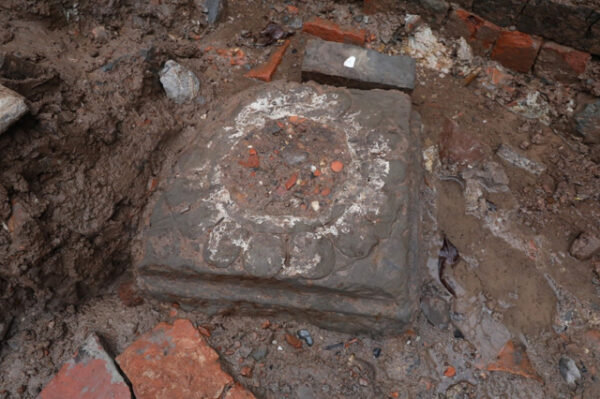
The foot of the rock has round holes decorated with lotus flowers in the Ly dynasty.
In the Tran period, the architectural vestiges here were small scale. The heavily burnt (ash) phenomenon has prompted the history of wars in the late 14th century that caused the city to burn several times to ashes.
The traces appeared suggested many new hypotheses
In the Le So period, there were 2 traces of the foundation, 1 architectural vestige with column foundation. These vestiges reflect the Le So period where many important works were built here (traces of soil in red brick and traces of background strips decorated with lemon flowers are carefully reinforced). Architecture with columnar foundation in the North-South direction can be a corridor-style architecture similar to the vestiges of the corridor in the West of Doan Mon discovered in 2013-2014. This suggests that the main architectural space of Kinh Thien Palace in Le So dynasty behind the Kinh Thien background is somewhat narrower than the front part.
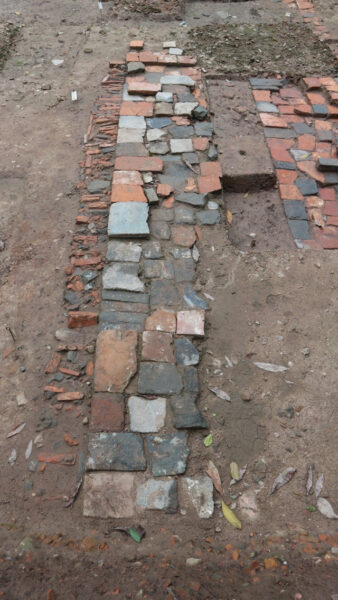
ơ. Traces of foundation decorated with lemon flower style in Le So period.
The Le Trung Hung period formed an architectural complex with large pillar foundation in the West and garden architecture in the East. The architecture with a columnar foundation is likely a 5-room, 2-leaned architecture on the Ngu dao axis straight to Doan Mon- Kinh Thien. It is very likely that this is the “gate” architecture of another palace district in the Central area. According to ancient bibliographies and ancient maps, after the main area of Kinh Thien Palace is Can Chanh Palace area. So if this is the gate architecture, then this is the relic marking the beginning of the second important architectural area on the central axis: It is the Can Chanh Palace area, the workplace of the Emperor and the court of Le Trung Hung.
Prof. Sc. Dr. Luu Tran Tieu – Chairman of the National Cultural Heritage Council said that: The excavation results have provided valuable documents from the ground and the excavation results in 2017 and 2018 have confirmed that the area of Hanoi ancient citadel and the 18 Hoang Dieu area is the center of the Imperial Citadel of Thang Long – the center of power continuously developed over 1000 years of history, in which the center axis of the Ly – Tran dynasties has not been clearly defined but the axis the center of Doan Mon – Kinh Thien – Hau Lau – Bac Mon was the center of power at least since the time of Le So – Le Trung Hung; The royal palace of the Nguyet period is also on this axis.
The “big water road” is the most important and prominent archaeological discovery in the space of Kinh Thien Palace, which proposes to expand all archaeological excavations to clarify the entire scale of the project (especially finding the angles of the water lines). This is the work that will attract visitors. – Professor Luu Tran Tieu emphasized.
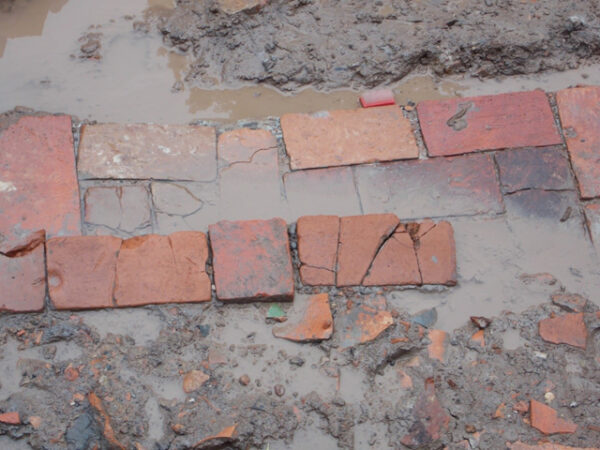
Traces of water road in Tran dynasty
The excavation in 2019 has uncovered many new monuments evoking new perceptions, contributing to an important step in understanding the appearance of the Kinh Thien Palace, thereby further increasing the value of the Heritage World of the Imperial Citadel of Thang Long.
By To Nga

